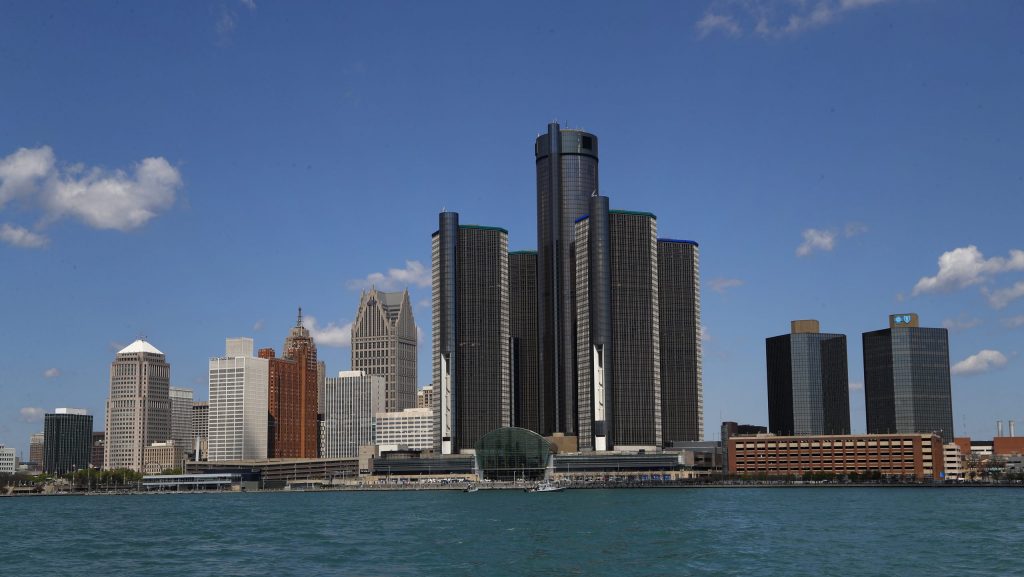Census Bureau estimates: Detroit population rises after decades of decline, South dominates growth
Associated Press May 16, 2024Estimates released Thursday show the population of Michigan’s largest city rose by just 1,852 people from 2022 to 2023.

DETROIT (AP) — America’s Northeast and Midwest cities are rebounding slightly from years of population drops — especially Detroit, which grew for the first time in decades — though the South still dominates the nation’s growth, according to U.S. Census Bureau estimates released Thursday.
Detroit, Michigan’s largest city, had seen an exodus of people since the 1950s. Yet the estimates released Thursday show the population of Michigan’s largest city rose by just 1,852 people from 631,366 in 2022 to 633,218 last year.
It’s a milestone for Detroit, which had 1.8 million residents in the 1950s only to see its population dwindle and then plummet through suburban white flight, a 1967 race riot, the migration to the suburbs by many of the Black middle class and the national economic downturn that foreshadowed the city’s 2013 bankruptcy filing.
“It’s a great day. It’s a day we’ve been waiting for for 10 years,” Mayor Mike Duggan told The Associated Press. “The city of Detroit has joined the communities in America that are growing in population according to the Census Bureau. For our national brand, it was critically important for the Census Bureau to certify us as growing.”
Modest reversals of population declines also were seen last year in other large cities in the nation’s Northeast and Midwest, while the census estimates showed 13 of the 15 fastest-growing cities in the U.S. were in the South — eight in Texas alone.
San Antonio, Texas, had the biggest growth spurt in pure numbers last year, adding about 22,000 residents. It was followed by other Southern cities, including Fort Worth, Texas; Charlotte, North Carolina; Jacksonville, Florida; and Port St. Lucie, Florida.
Three of the largest cities in the U.S. that had been bleeding residents this decade staunched those departures somewhat. New York City, which has lost almost 550,000 residents this decade so far, saw a drop of only 77,000 residents last year, about three-fifths the numbers from the previous year.
Los Angeles lost only 1,800 people last year, following a decline in the 2020s of almost 78,000 residents. Chicago, which has lost almost 82,000 people this decade, only had a population drop of 8,200 residents last year.
And San Francisco, which has lost a greater share of residents this decade than any other big city — almost 7.5% — actually grew by more than 1,200 residents last year.
New York City with nearly 8.3 million people remained the nation’s largest city in population as of July 1, 2023. Los Angeles was second at close to 4 million residents, while Chicago was third at 2.7 million.
Houston at 2.3 million residents, Phoenix at 1.7 million, Philadelphia at 1.6 million, San Antonio, Texas, at 1.5 million, San Diego at 1.4 million, Dallas at 1.3 million and Jacksonville, Florida, at 986,000 round out the top 10 largest cities.
For Detroit, the population bump is the continuation of slow and steady progress and confidence in the city. The NFL draft set a new attendance record after more than 775,000 fans flooded downtown Detroit last month for the three-day event.
That’s far removed from where Detroit sat following its December 2014 exit from the largest municipal bankruptcy in U.S. history. About $7 billion in debt was restructured or wiped out by the bankruptcy and $1.7 billion was set aside to improve city services.
Duggan took office in January 2014 and set about tackling the city’s massive blight problem. More than 25,000 houses have been razed, mostly with federal funding, and 15,000 have or are being renovated. About 4,500 vacant houses remain, many still to be torn down or renovated, according to the city.
“As we remove blight, more and more people are moving into the good houses,” Duggan said. “Right now, it doesn’t seem like we can build apartments fast enough.”
Duggan also credits auto manufacturers and other companies bringing back jobs as aiding population growth across the 139-square-mile (360-square kilometer) city.
But how many people actually live in Detroit and how they’re counted has been a source of friction between the city and the Census Bureau. In September 2022, Detroit sued the Census Bureau over population estimates from 2021 that showed it lost 7,100 residents.
Duggan told reporters then that the city wanted the Census Bureau to reveal how it produced its population loss estimates for Detroit. The lawsuit followed the city’s appeal of the 2020 census data that showed Detroit with 639,111 residents, while estimates from 2019 put the city’s population at 670,052 residents.
Detroit was among several large cities to file a challenge of their 2020 census figures, following a national head count in which the Census Bureau acknowledged that a higher percentage of African Americans and Hispanics were undercounted than the previous decade. About 77% of Detroit’s residents are African American, and Hispanics make up almost 8% of the population.
Reporting by Corey Williams and Mike Schneider, Associated Press
